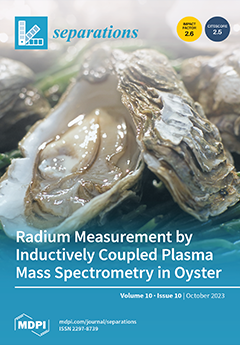A wet electrostatic precipitator (WESP) is typically installed downstream of wet flue gas desulfurization (WFGD) to remove fine particles and sulfuric acid mists from flue gases in coal-fired power plants. The emission reduction characteristics of multiple pollutants and the energy consumption data of 214 sets of WESPs (94 sets of metal plate WESPs, 111 sets of conductive Fiber Reinforced Plastic WESPs, and 9 sets of flexible plate WESPs) were tested and analyzed, and the results showed that: WESPs had a high removal efficiency on PM, PM
2.5, SO
3, droplets and Hg, and mostly concentrated in ≥75%, ≥70%, ≥60%, ≥70% and ≥40%, respectively. The outlet pollutant concentrations were mostly concentrated in ≤5 mg/m
3, ≤3 mg/m
3, ≤5 mg/m
3, ≤15 mg/m
3 and ≤5 μg/m
3, respectively. Specific power consumption and specific water consumption were concentrated in the range of 0.5~2.5 × 10
−4 kWh/m
3 and ≤10 × 10
−6 t/m
3. The correlation analysis of multiple pollutant’s removal performance was studied and the quantitative evaluation index requirements of high efficiency WESPs were determined in this paper. The high efficiency indexes of WESPs, such as PM emission concentration, SO
3 emission concentration, PM removal efficiency, SO
3 removal efficiency, pressure drop, air leakage rate and specific power consumption, were ≤2.50 mg/m
3, ≤2.50 mg/m
3, ≥90%, ≥85%, ≤200 Pa, ≤0.5% and ≤1.3 × 10
−4 kWh/m
3, respectively. The high efficiency indexes of specific water consumption for metal plate WESPs and FRP WESPs were ≤2.50 and ≤0.66 × 10
−6 t/m
3, respectively. This study can provide valuable reference for the following energy conservation and efficiency improvement of ultra-low emission units.
Full article





